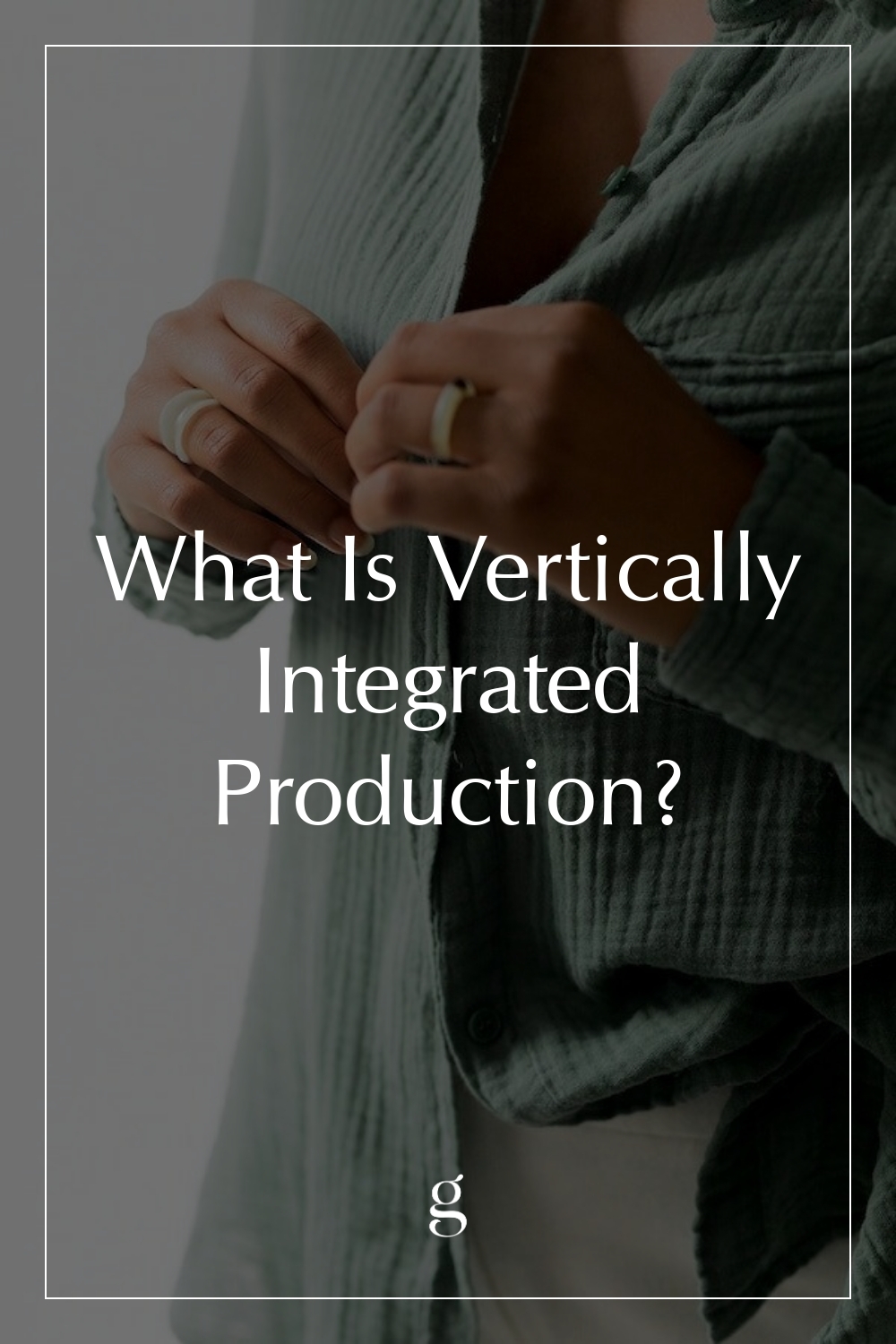
What Is Vertically Integrated Production?
Making Products “In-House”
Before the Industrial Revolution, product manufacturing mostly happened in-house, with producers overseeing everything from beginning to end. It wasn’t until around the 19th century that processes changed, and companies started outsourcing production because it was a cheap and quick way to expedite growth.
“Companies are once again creating in-house as they take back control and oversee product production.”
But outsourcing comes with concerns, as it can make it more difficult for companies to oversee ethics and transparency within their companies. This has been especially problematic in the fashion industry, where issues from human rights violations and unethical labor conditions to waste problems occur.
As customers continue demanding transparency, vertically integrated production has become a viable solution. In other words, companies are once again creating in-house (so to speak) as they take back control and oversee product production. From source to sale, vertically integrated companies are aiming to streamline their manufacturing. Could this production method be the answer to the transparency problems? Or is this simply another tool for greenwashing?
Big Business Benefits
Vertically integrated production, also known as backward integration, is when a company buys or controls manufacturers and suppliers for its products and materials. This can include all aspects of the value chain—from raw materials to product marketing and sales.
On the opposite end, forward integration happens when a company controls product distribution, aka direct-to-consumer. Many companies that utilize vertically integrated production also have control over forward integration, though it’s not always the case. [This is a helpful visual with vertical integration (VI) on the left and the design/source/distribute model (DSD) on the right.]
The advantages of vertically integrated production abound for brands and consumers. Ultimately, it’s cost-efficient, as it bypasses many transportation and per-unit costs (the amount a company pays to make one unit of its product). It can also lower product costs for consumers.
“The advantages of vertically integrated production abound for brands and consumers.”
“Regardless of what the product actually is, most vertically integrated companies have a leg up on the competition, because they can often offer lower-cost or higher-quality products to consumers,” writes Anne Sraders in TheStreet. With vertically integrated production, companies can oversee their supply chains without working with a “middleman” or worrying that sub-contracting is occurring without their knowledge, Sraders explains.
In this way, vertical integration can close information gaps along supply chains, ideally minimizing the risk of labor exploitation or wasteful practices. And if a brand has control over its manufacturing, minimum production amounts can become obsolete, freeing them up to move towards a made-to-order model. Used wisely, brands in the fashion industry can reduce textile waste by relying on customer feedback, instead of overproducing for the masses. Brands interested in sustainable manufacturing also have the ability to regulate chemicals, water usage, and energy efficiency.
Finally, there’s less room for mishaps during the manufacturing process because communication isn’t spread across a wide array of suppliers and partners. Companies can create better products and experiences for their customers because adjustments can happen more quickly than with traditional supply chains.
Worth The Work?
A system where communication and production are streamlined sounds promising, though the initial costs needed to vertically integrate production can be overwhelming for companies. And the learning curve required to manage this new system is steep. One of the reasons why traditional supply chains are so popular is because companies can outsource specialized and tedious work to others. For fashion brands in particular, this means farmers, garment workers, dye houses, etc.
“The initial costs needed to vertically integrate production can be overwhelming.”
Vertical integration can also be challenging because it requires a company to understand nearly every step of the production process and become an expert at each level. Unless a business decides to form a conglomerate (a corporation consisting of multiple independent businesses), scaling a brand for this model takes much more work.
While not a new concept, operating as a vertically integrated business while prioritizing sustainability and ethics is more nuanced, resulting in many companies simply using the “vertically integrated” terminology to win over customers. Zara, for example, is a vertically integrated brand despite its ethics controversies. As consumers have gotten savvier, so have corporations looking to profit.
Vetting Vertical Integration
Fortunately, not all hope is lost. Many companies are making a move to vertical integration with people and the planet in mind. Groceries Apparel, Nisolo, and Soko are a few examples of brands consciously utilizing this manufacturing model.
“Vertical integration can open up opportunities for increasingly environmental practices and ethical accountability within fashion.”
This kind of operating system can open up opportunities for increasingly environmental practices and ethical accountability within fashion, though this may take some time. While we anxiously await the transition, here are ways you can vet companies attempting this model.
Observe Language. Find the company’s definition of vertically integrated production on its website and see what elements of the “in-house” system they emphasize. Is it more interested in being able to reduce waste? Maintain safe labor practices? Innovate its end product? This information will help you decide if the brand’s values align with your own.
Find Evidence. Once you’ve confirmed the brand’s values, make sure to find evidence for its claims. Blanket statements and vague platitudes won’t cut it when it comes to sustainable and ethical manufacturing. For example, if the brand is committed to reducing waste, seek out specifics for how this commitment is carried out.
Ask Questions. Can’t find what you’re looking for? Reach out to the business to get some answers. Whether through social media, email, or in-store (when possible), ask questions to hold the brand accountable.
Audrey Stanton was born and raised in the Bay Area and is currently based in Los Angeles. She works as a freelance writer and content creator with a focus in sustainable fashion. Audrey is deeply passionate about conscious living and hopes to continue to spread awareness of ethical consumption.





